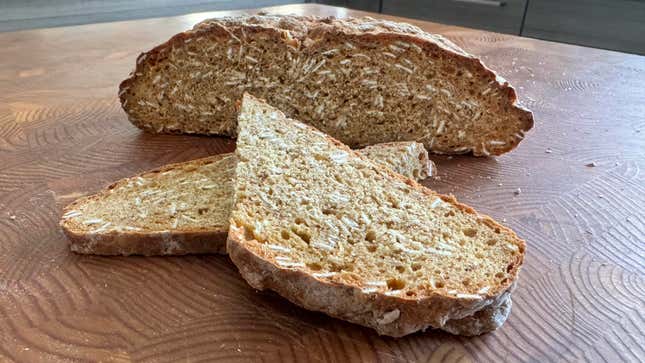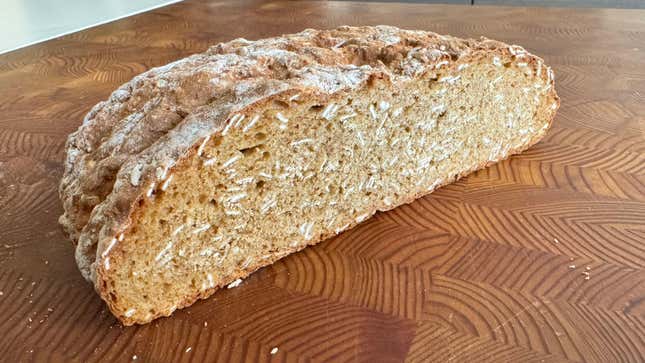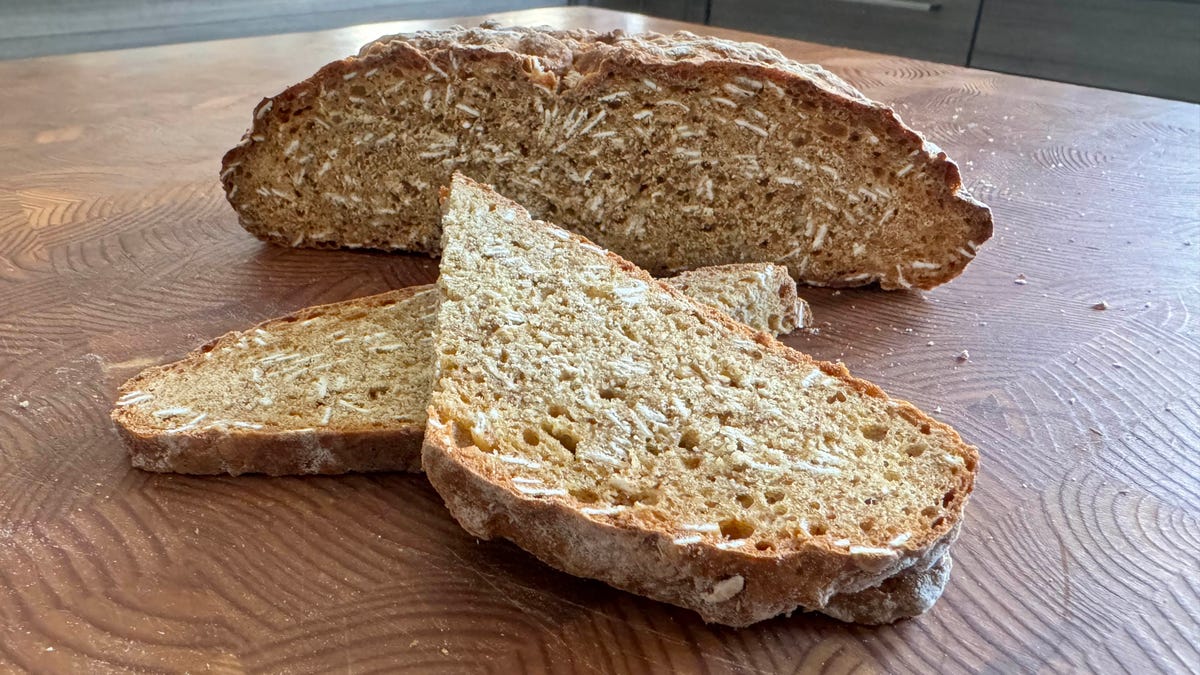
When I travel, I seek out hotels that have some sort of foodie bent. Maybe a fantastic onsite restaurant from a great chef, or an elegant afternoon tea or fun happy hour, a cozy bar with craft cocktails. Frequently this means leaning into the boutique hotel market, since larger global brands tend to be by necessity a bit cookie-cutter, and often fall down on the culinary niceties. On a recent trip to DC, my hotel offered the opportunity to go deep on Irish hospitality—just in time for St. Patrick’s Day.
------Advertisement-----
The Dupont Circle Hotel, part of the privately held Doyle Collection, leans hard on its Irish roots, particularly in its dining options. From the Barry’s Tea and Irish Shortbread in the rooms, to a spectacularly cozy bar where all your whiskey dreams can be realized, it is a destination for visiting Irish dignitaries and expats alike.
Admittedly, I was there as a fangirl. As part of the hotel’s expansive Irish Heritage Month programming, it had flown in Chef Richard Corrigan, an Irish chef based in London, and I was not about to miss his appearance. Corrigan is one of my favorite chefs on the BBC’s competition show, in which he first appeared as a three-time winning competitor and now regularly appears as a judge; he not only has five restaurants in his London stable, but also a lodge and farm in Ireland. At the Dupont Circle Hotel, he was cooking dinner at The Pembroke restaurant and leading a private master class on a classic recipe: Irish soda bread.
------Advertisement-----
Why soda bread deserves your attention
I have no Irish heritage myself, and though I enjoy many traditional Irish foods tremendously, I’ve never really liked soda bread, that simple daily bake we associate with Emerald Isle cookery. I have always found it dry, crumbly, impossible to slice thinly without the whole loaf falling apart, and stale tasting almost as soon as it has cooled.
Corrigan’s soda bread, though, is a revelation. It has a crisp crust, but not tooth-shatteringly so. There’s a dense, moist crumb with gorgeous flavor. A hint of sweetness shines through from molasses and honey, and each slice needs only a (chef-approved) thick slathering of butter and a sprinkle of flaky sea salt to make it shine. It’s also endlessly adaptable, once you know the technique, you can experiment with adding seeds or nuts and adjusting to your own taste. Simple to pull together and bake, it is gorgeous in the bread basket for dinner the day it is made, will keep a day or so in the breadbox for toast, and thereafter can be sliced thin for crackers or cubed and fried for croutons.
------Advertisement-----
With Chef Corrigan’s permission, I’ve adapted the recipe for sharing, along with his top tips for making soda bread in general. Since Corrigan’s farm upbringing makes him a passionate advocate for the small farmer and an ambassador for sustainable and humane food, he made me promise that I would also emphasize how essential it is for all of us who care about food to support local farmers and producers by seeking them out for our home cooking—and dining at restaurants that are committed to doing the same. Which was an easy thing to promise.
I cannot think of a better way to celebrate St. Patrick’s Day, but I also know this bread is going to be in rotation at my house forever.

Tips for making great Irish soda bread
These techniques for great soda bread will improve your own practice, even if you are not using this recipe. As you can see, they’re pretty simple.
- Mix the dry ingredients in a bowl, make a well, and then add your wet ingredients.
- To blend the mixture, use just your index finger crooked in the shape of a hook to stir. Think of your finger as a miniature dough hook! And be sure to stop mixing just as soon as it comes together. No kneading, no overworking.
- Sugar, here in the form of both molasses and honey, is key to the texture, flavor, and longevity of soda bread. Since sugar is hydroscopic, it attracts moisture, so adding a little bit of sweetener helps prevent the dreaded dry and crumbly texture that plagues many soda breads.
- Cook about two-thirds of the time listed in the recipe, then flip the loaf over to ensure a really even bake.
- Take a large, barely damp, clean, lint-free tea towel and lay it on your cooling rack. As soon as the loaf comes out of the oven, place it on top of one half of the tea towel, then lightly drape the other half over the top of the loaf, which will prevent the crust from getting too rock-hard as it cools.
- For the best possible texture and flavor, let the bread cool for at least 30 minutes before slicing.

Soda Bread Recipe
Lightly adapted from Chef Richard Corrigan
Makes one large loaf
Note: I have provided both the original weight measurements (which I always recommend) as well as volume measurements. If using measuring cups, fluff up the flours and use a spoon to lightly fill the cups, then level off the top with a knife or bench scraper. If you overfill on the flours here, your bread will be especially dense and susceptible to dryness.
- 250 g (1 ¾ cups) all-purpose flour
- 150 g (1 cup plus 1 ½ Tablespoons) whole wheat flour
- 10 g (2 teaspoons) fine sea salt
- 15 g (3 teaspoons) baking soda
- 1 Tablespoon light honey
- 1 Tablespoon black treacle (if you cannot source this, you can use molasses or sorghum syrup)
- 500 ml (2 cups) buttermilk
Heat your oven to 400 degrees Fahrenheit (375 if using convection) and line a baking sheet with parchment paper. Lightly flour the center of the parchment where you will place your loaf.
Mix all the dry ingredients in a large mixing bowl and make a well in the center. Mix the honey and treacle or molasses with the buttermilk until well blended. Add the buttermilk mixture to the center of the well, and with your index finger crooked into a hook shape, gently mix the dough just until it comes together and you do not see any streaks of dry flour. You should have a fairly loose, wet dough.
Flour your hands and lightly flour your work surface, either a board or countertop. Gently transfer the dough to the floured surface and shape the dough into a round, using as little flour as possible (just enough so it doesn’t stick). Transfer the loaf to your prepared baking sheet. If the top of the loaf looks wet, sprinkle just a little flour on top. Using a sharp knife, score the top of the loaf about ½ inch deep in a cross shape.
Bake for about 45 minutes total (likely 35 if using convection). At around the 30-minute mark (25 for convection), check the loaf and turn it upside down for the remainder of the baking time. The loaf will be done when it sounds hollow when tapped on the bottom, or you can temp it at 200 with a digital probe thermometer.
Take a large, barely damp tea towel and lay it on your wire rack. Place the baked loaf on top of one half of the towel, and then lightly drape the other half over the top of the loaf. Leave it there and let the bread cool.
To serve, Chef Corrigan says you should spread a slice with butter thick enough to see the marks of your teeth in, preferably with a sprinkle of on top. He also loves eating soda bread toasted the next day with a bitter Seville orange marmalade or blackcurrant jam. It’s also a great pairing with any wonderful charcuterie or cheeses you have on hand.
You can add chopped nuts, sunflower seeds, or other additions to the mix, too—Chef Corrigan especially loves to coat the top with pumpkin seeds.
If you ever get to London, be sure to dine at any of the , and if you are headed for DC, the will take exceptionally good care of you.
